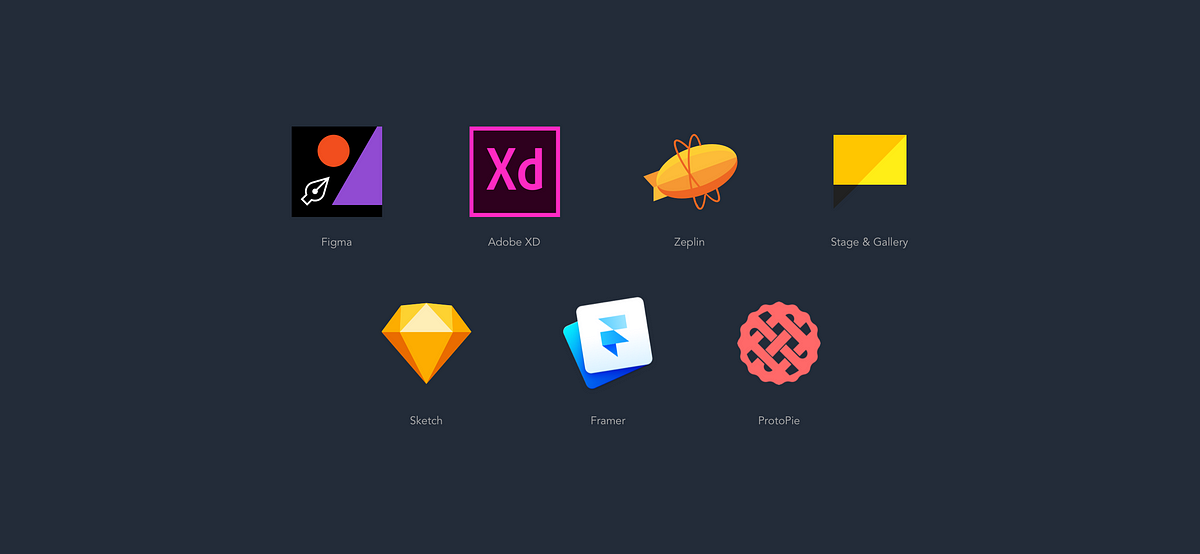
The most promising design tools you should try in 2017
…
2016 was clearly the year for design tools, with new tools being released to the public and previously existing tools being improved with new features. I’ve picked some design tools worth keeping an eye out for throughout 2017. These tools are based on popularity among design tool user communities, and I am sure that I’m not mentioning some tools.
01. Figma
With Sketch becoming more popular, vector-based drawing software is becoming more mainstream. Figma stands out for its real-time collaborative features on top of its core design toolset. Just like how programmers can add their own code into one project in real time, Figma allows multiple designers to work together from far away. You might wonder just how often two or more designers would be working on the same project simultaneously, but if you think of a setting where team members are looking at a project and offering feedback in a meeting and simultaneously modifying a project, Figma will fit the bill.
Official site: https://www.figma.com
More info: https://medium.com/figma-design
Community: https://www.facebook.com/figmadesign/
02. Adobe XD
One lesser-known fact is that Adobe has been heavily involved in prototyping for a long time. Adobe launched Edge Tools in 2012, but unfortunately discontinued it in 2015. However, Adobe returned with Adobe XD in 2016. XD is a vector drawing app that allows easy prototyping by building click-through prototypes with numerous artboards. Some users say that XD is a copycat of Sketch, or a combination of either Sketch and InVision or Sketch and Craft (formerly known as Silverflow), but it is very likely that Adobe will continue to improve on XD and feature greater connectivity among other Adobe software. Furthermore, unlike Sketch, which is exclusive to Mac OS X, XD is also available on Windows.
Official site: http://www.adobe.com/products/experience-design.html
More info: https://blogs.adobe.com/creativecloud/tag/xd-product-updates/?segment=design
Community: https://www.facebook.com/AdobeExperienceDesign/
03. Sketch & Plugins
Zeplin is the best-known plugin for Sketch. It helps developers easily check the UI Specs of layers in the Artboard. Furthermore, they can comment on an Artboard or download necessary assets for development directly through Zeplin. With the help of Zeplin, designers do not have to individually draw UI Specs, and developers do not have to manually request specs or assets that were mistakenly left out by designers.
Offcial site: https://zeplin.io
More info: https://medium.com/zeplin-gazette
Community:https://www.facebook.com/zeplin.io/
05. Stage & Gallery
Following the acquisition of Pixate and Form by Google, the teams behind both pieces of software are now working together on a new design tool. Stage is an interaction prototyping tool, while Gallery is a collaboration tool for designers. However, beyond this, additional features have yet to be unveiled to the public. Some speculate that these two apps may make full use of Google’s cloud platform, but one way or another, both apps are slated to be unveiled next year, so all will likely be known then.
Official sites: https://material.io/stage/, https://material.io/gallery/
06. Framer
Unlike other prototyping tools for designers, Framer utilizes coding (Coffeescript) for prototyping. Out of all prototyping tools mentioned in this post, it has the highest learning curve. In previous versions, designers had to manually type in code, but a revamped version released in the summer of 2016 Auto-Code to reduce manual coding.
Official site: https://framerjs.com/
More info: https://blog.framerjs.com/
Community: https://www.facebook.com/groups/framerjs/
07. ProtoPie
ProtoPie makes it possible to create microinteraction prototypes without a single line of code. Other tools seemingly require designers to become coders and frame designing from a programming perspective. ProtoPie has been developed as a designer’s tool, allowing the re-interpretation of interactions from a designer’s perspective. Unlike other prototyping tools, prototypes made by ProtoPie do not merely show a visual preview of a prototype on a mobile screen. Rather, ProtoPie makes it possible to physically test multi-finger gestures, sensor usage and device-to-device communication, making it possible to create a prototype that uses most of a smart device’s functions in a realistic context. Recently, ProtoPie was updated to allow conditional interactions, and a Windows version is currently in the works.
Official site: https://www.protopie.io/
More info: https://blog.protopie.io/
Community: https://www.facebook.com/protopie/
…
New design tools will be featured in the market in the very near future and undergo further development.
How about branching out to other tools in the name of becoming more productive instead of stubbornly sticking with previous tools in the new year? The tools mentioned in this post will be a good first step.
from Sidebar http://sidebar.io/out?url=https%3A%2F%2Fblog.prototypr.io%2Fthe-most-promising-design-tools-you-should-try-in-2017-2e5d34b16261%23.pkeipyydk
